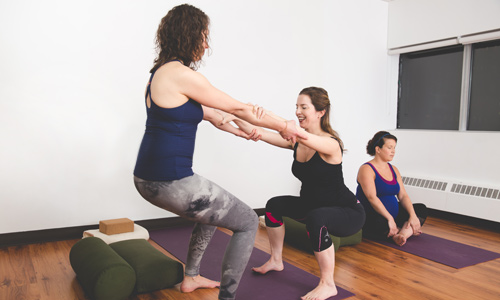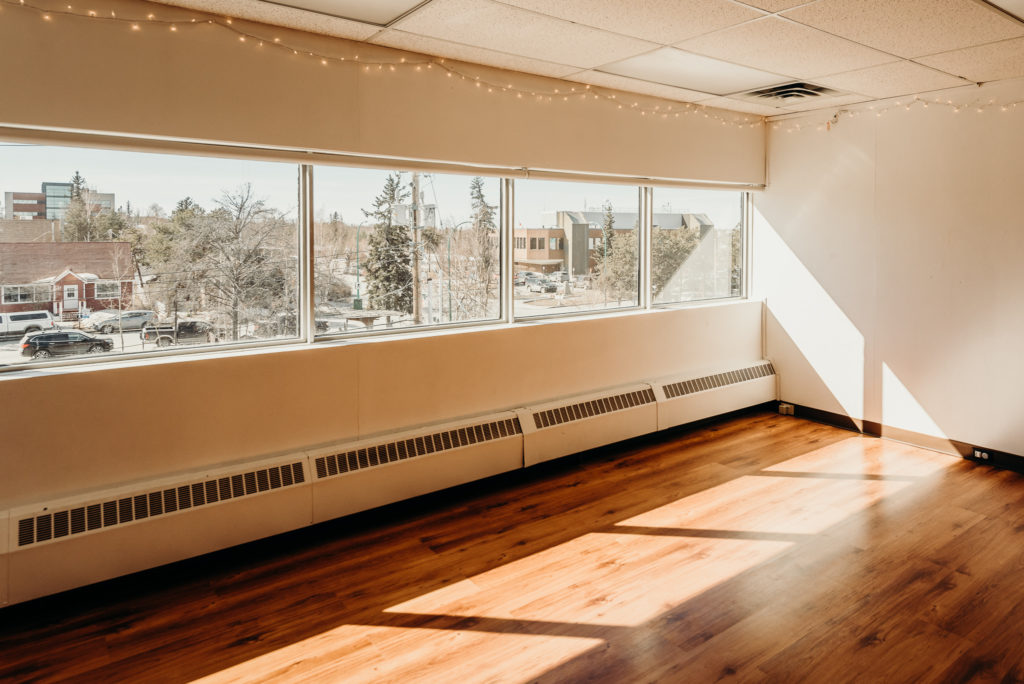I want to set the record straight about something that relates to many questions I get as a Prenatal Movement teacher: the difference between maintaining fitness in pregnancy, and participating in pregnancy-specific exercise. Often I find that women view these as an either/or situation. This usually looks like one of the following scenarios:

She continues with whatever sport, fitness activity or exercise she LOVES and ENJOYS and has been a regular part of her life UNTIL she gets further into her pregnancy and is uncomfortable in her normal activity. She then seeks out my class as a way to keep moving in late pregnancy.
OR
 She’s concerned that her regular sport or activity might not be appropriate in pregnancy and so stops it altogether and instead ONLY seeks out pregnancy-specific classes like mine to keep her active throughout her entire pregnancy.
She’s concerned that her regular sport or activity might not be appropriate in pregnancy and so stops it altogether and instead ONLY seeks out pregnancy-specific classes like mine to keep her active throughout her entire pregnancy.
In both of these scenarios I feel there is something missing. Continuing with fitness activities (whether it’s running, cross-fit, dance, or your regular yoga class if that is your activity of choice) and finding a prenatal-specific class serve two very different purposes in pregnancy.
Let’s take a closer look. In this blog post (Part 1) we’ll look at your regular fitness activities.
Your regular fitness activities are great because:
– your body is used to them and is well-adapted for them if you have been doing them regularly for some time
– you chose these activities and they make you happy
– they nourish you physically and help keep you active with all the regular health benefits of maintaining an active lifestyle
If you love an activity or sport the joy it brings you has a positive effect on stress and stress physiology (stress hormones). We know that a mother’s stress can affect her pregnancy, and her unborn child in numerous ways, especially influencing fetal brain development.
Here is a link to one of many research articles on this.
So I don’t recommend you give up the activity or sport that you have already adapted to during your pregnancy, especially if you love it and it brings you joy. It will nurture you and your baby both mentally and physically. Yet there still are some useful guidelines……..
Your body is likely well-adapted to your sport unless you got pregnant within the first few months of starting a new activity. It takes a few months of regular activity for the body to adapt to it. Pregnancy is NOT a good time to adapt your body to a new sport, especially if it is a demanding one as your body is already undergoing rapid physiological change. Walking, swimming, gentle yoga and similar are generally exempt from this advice and are usually ok to do in pregnancy even if you were not doing them regularly before.
Here are some other guidelines and cautions (the same ones apply postpartum):
1. Avoid crunches and crunch-like exercises in pregnancy. Crunches increase intra-abdominal pressure and can put excessive pressure on the linea alba (the line of connective tissue that runs down the middle of your abdomen that your abdominal muscles connect to) which can lead to a larger diastasis of your rectus abdominus (6-pack) muscle that is more difficult to recover from postpartum (diastasis is a separation of the abdominal muscles to accommodate the growth of your baby). Crunches also put unnecessary pressure on the pelvic floor as well as the low back.
2. Rather than rule out a bunch of exercises altogether in pregnancy, follow the guidelines below for exercises that increase intra-abdominal pressure and require good core recruitment to stabilize the movement. Examples of exercises in this category include impact exercises (running and jumping), heavy lifting exercises, and exercises specifically targeting the core (e.g., core strength class). More challenging yoga postures or dance moves or other exercise requiring you to stabilize in variable positions also fit this category.
Guidelines:
- Be mindful of how you are using your core to stabilize the movement. If you feel pressure down on the pelvic floor or notice your belly bulges forwards rather than draws in, then stop doing that exercise until you can more effectively recruit your core. Find a PT or a trainer that can teach you how to recruit the pelvic floor with the transverse abdominals (deep abdominal muscle) so that you are not compromising your pelvic floor or making a diastasis worse.
- If your activity is causing you to be incontinent (leak pee) OR causing pain, then please stop doing that activity unless you are able to work with someone to find strategies to use your core and body differently to avoid pain and dysfunction. You don’t get “hard core fit mom” points for training through it.
- Watch that you are not holding your breath during strenuous activity. If you can’t breathe this is a sign that you are not recruiting your core well or that the exercise is too strenuous for your current level of ability. It can negatively impact the pelvic floor.
- Finally (and probably the most important) if you are doing a lot of activities that require a strong use of the pelvic floor and core to stabilize the movement, check that when you go back to your regular activities that you are not holding residual tension through the pelvic floor and core when your movement no longer requires it. You need to RELAX your pelvic floor and core muscles in order for your normal (piston) breathing to keep them healthy.
That’s really it. Unless you have some medical reason where your doctor has specifically advised against certain types of exercise, or nausea or fatigue are signalling that you should do something else, or you have had less than 3 months before getting pregnant with your activity, then as long as you avoid crunches and watch out for the above signs of pelvic floor and core dysfunction during your regular activities, and remember to RELAX your pelvic floor and belly afterwards, you should be good to go.
Enjoy your active pregnancy!
Check out Part 2 where I discuss why Pregnancy-specific Exercise is also something to consider and serves an entirely different purpose.


